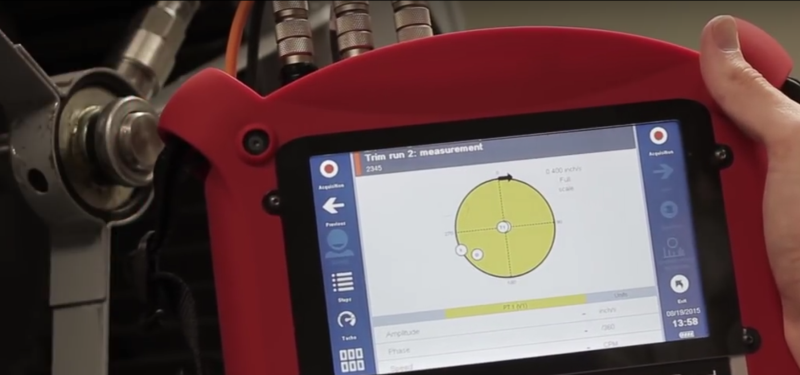Unbalance and misalignment are problems that need to be addressed as soon as possible, but before you can begin to fix them, first you need to know how to find them on a spectrum.
We will go over this below.
For example, with a fan, unbalance appears on the spectrum as a higher than normal amplitude at 1x. This is because extra force is being applied at each rotation. With couple and dynamic unbalance, 1x will also appear larger than normal because of the force applied to each rotation.
Additionally, phase relationships between bearings will vary based on the type of force involved. Unbalance will also appear differently, depending on whether it is static, couple, or dynamic unbalance.
A few things to know about the different types of unbalance:
- Static unbalance involves a single force and can be observed even when the machine is at rest.
- Couple unbalance cannot be observed when the machine is at rest.
- Dynamic unbalance is a combination of static and couple unbalance.
Now what about misalignment?
When a machine is misaligned, its bearings generally are forced to carry a higher load than they were designed to handle. This can cause bearing failure.
Angular misalignment is characterized by high axial vibration. It is also often characterized by unusually high 1x and 2x and sometimes 3x frequencies in the axial direction. Parallel or offset misalignment is characterized by high radial vibration and 2x is often larger than 1x. Amplitude can vary based on coupling type and construction.
Remember, because most misalignment is a combination of angular and parallel misalignment, both the radial and axial frequencies should be analyzed.
It should also be noted that while misalignment forces are seldom the same in both horizontal and vertical positions, unbalance forces generally are the same in both positions.
A helpful tip for observing a spectrum for possible unbalance is if the signal has harmonics above once per revolution, the fault is likely not unbalance.
We hope this information enables you to identify these two issues as conclusively as possible so you can address them as quickly as possible.



